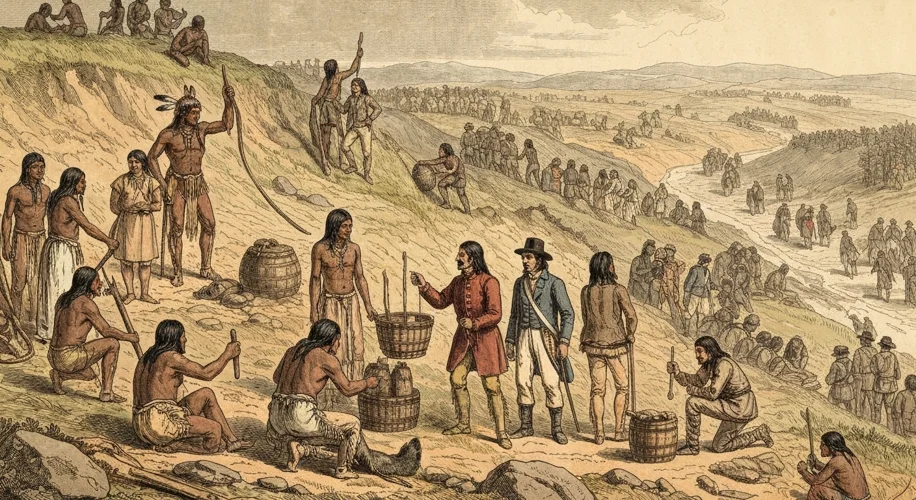The ebb and flow of people between nations is as ancient as civilization itself. For centuries, the border between the United States and Canada has been a locus of constant, yet often subtly shifting, movement. Today, we witness a headline-grabbing reversal: more Canadians are visiting the U.S. than Americans are visiting Canada. This isn’t merely a blip on the tourism radar; it’s a fascinating echo of historical patterns shaped by economic forces, cultural ties, and evolving global dynamics.
From the earliest days, the vast expanse stretching north and south of the Great Lakes and the St. Lawrence River has been a conduit for human migration and interaction. Indigenous peoples traversed these lands long before any lines were drawn on maps, their movements dictated by seasonal patterns, trade routes, and kinship ties. The arrival of European colonists introduced new motivations for crossing – settlement, trade, and conflict. French and British imperial ambitions, for instance, often led to skirmishes and population shifts across what would eventually become the Canadian-American border.

Following the establishment of Canada as a distinct dominion and the consolidation of the United States after its Civil War, the border solidified, yet the movement of people continued, driven by distinct economic currents. For much of the 20th century, the United States, with its burgeoning industrial might and Hollywood-fueled popular culture, acted as a powerful magnet for Canadian tourists. The allure of American cities, shopping destinations, and entertainment was undeniable. Conversely, the U.S. also saw significant numbers of Canadians crossing south, often for business, family visits, or to access goods and services not readily available or perceived as superior in Canada.
Economic factors have always been paramount. When the Canadian dollar weakened against the U.S. dollar, it made trips south more affordable and appealing for Canadians. Conversely, a strong Canadian dollar could make the U.S. a more attractive destination for American travelers. Beyond currency, the availability of certain products, retail experiences, and even seasonal attractions played a significant role. Think of Canadians flocking to American border towns for “shopping sprees” or Americans seeking out Canadian natural beauty, particularly in the vast wilderness of the Rockies or the Maritimes.
However, the narrative of who visits whom has begun to change. Several factors contribute to the current trend of more Canadians heading south. A significant driver is the economic landscape. While exchange rates fluctuate, underlying economic conditions in both countries, including relative inflation rates, employment opportunities, and the cost of living, influence disposable income and travel budgets. Furthermore, changes in the travel industry itself – the rise of budget airlines, online booking platforms, and diverse travel packages – have made international travel more accessible for a broader segment of the population.
Consider the shift in consumer preferences and the development of Canada’s own tourism infrastructure and cultural offerings. Canadian cities have increasingly become vibrant international destinations, boasting world-class museums, culinary scenes, and cultural festivals. The “Made in Canada” brand, encompassing everything from fashion to food, has gained prominence, potentially reducing the perceived need for cross-border shopping for certain goods.

The social and cultural currents are equally influential. As ties between the two nations remain strong, personal connections – family, friends, and business relationships – continue to be a primary reason for travel. However, the digital age has also reshaped how people experience and perceive other countries. Social media, travel blogs, and online reviews can highlight lesser-known destinations or promote unique experiences, potentially diversifying travel patterns away from traditional hotspots.
The current reversal, with more Canadians visiting the U.S. than vice-versa, is not a definitive historical endpoint but rather a snapshot in an ongoing, dynamic relationship. It underscores how deeply intertwined the economies and cultures of Canada and the United States are, and how sensitive these relationships are to even subtle shifts in economic conditions, consumer behavior, and global events.
Looking back, the movement across this longest undefended border has always been a barometer of the health and nature of the bilateral relationship. The current trend prompts reflection: What does this say about the relative economic attractiveness, the perceived value of cross-border experiences, and the evolving cultural landscape of North America? The sands continue to shift, and history is, as always, a valuable guide to understanding the present and anticipating the future.

